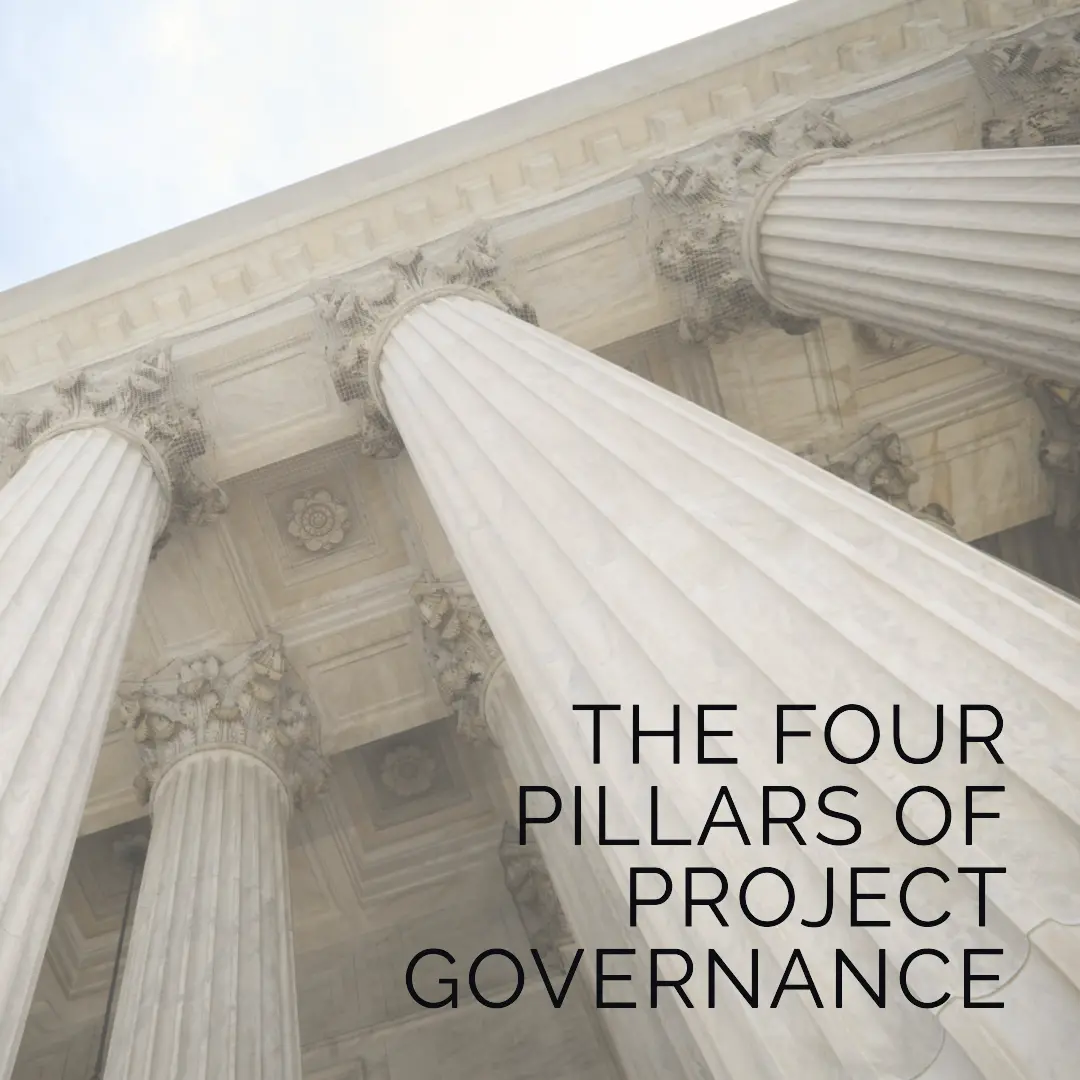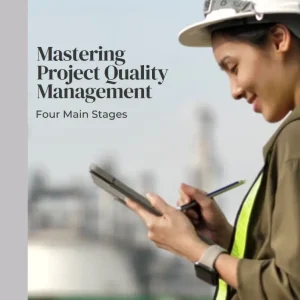To find out how Artificial Intelligence is changing the Project Management landscape, you may enjoy reading this article https://www.shaunstoltz.com/did-artificial-intelligence-just-change-everything-about-project-management/
I. Introduction
In a world that’s increasingly project-oriented, the success or failure of an enterprise often hinges on how well projects are governed. But what exactly is project governance and why is it so vital? Simply put, project governance is the framework that ensures projects are executed in a way that supports a business’s strategic objectives and delivers value. It provides the structure, processes, and decision-making models that enable effective project management.
The importance of a robust project governance framework cannot be overstated. It serves as the backbone of any project, providing clarity, direction, and accountability. It ensures that projects are not only completed on time and within budget but also align with the company’s overarching goals and contribute to its success.
In this blog post, we will delve into the heart of project governance by exploring its four pillars: Alignment, Accountability, Assurance, and Adaptability. Each of these pillars plays a critical role in creating a successful project governance framework. They provide the structure and guidelines that allow organizations to manage projects effectively, ensuring that they deliver the desired outcomes and add value to the business.
Join us on this insightful journey as we unpack each of these pillars, helping you build a robust foundation for your project governance framework. Whether you are a seasoned project manager or a novice looking to improve your project management skills, there’s something in this exploration for everyone. Let’s get started.
II. Pillar 1: Alignment
The first pillar we’ll explore is Alignment. In the context of project governance, alignment refers to the harmonization of the project’s goals and activities with the overall strategic objectives of the business. It’s about ensuring that each project undertaken isn’t just an isolated endeavor, but a meaningful component of the larger corporate strategy.
Imagine a construction project. The individual elements – the architects, the builders, the raw materials – they all need to come together in a coordinated manner to achieve the final product: a completed building. Similarly, Alignment in project governance ensures that every project, every team, and every task is steering the business towards its strategic goals.
So, how can businesses ensure strategic alignment in their projects? It begins with clear communication of the business’s strategic objectives. Every team member needs to understand not only what they’re doing, but also why they’re doing it, and how it contributes to the larger picture. This understanding guides decision-making at all levels, aligning day-to-day tasks with long-term goals.
Let’s consider a real-world example to illustrate this. Tech giant Google is renowned for its strategic alignment. When launching Google Maps, it was not merely seen as a standalone project, but rather as an integral part of their wider mission to organize the world’s information and make it universally accessible and useful. The alignment of Google Maps with this overarching goal has contributed to its widespread adoption and success, and it has, in turn, reinforced Google’s strategic objectives.
Alignment, then, is not just about keeping all ducks in a row. It’s about ensuring that every project undertaken is a purposeful stride towards the business’s strategic goals. It’s the compass that keeps the business on the right path, the keystone in our project governance arch.
III. Pillar 2: Accountability
Having explored the importance of alignment, let’s turn our attention to the second pillar of project governance: Accountability. Accountability, as the term suggests, is about responsibility – specifically, ensuring that each team member is aware of their roles and responsibilities within the project.
In project governance, accountability extends beyond individual tasks. It also involves understanding how one’s role fits into the larger project framework, and how individual contributions impact project outcomes. Clear lines of accountability ensure that everyone knows who is doing what, when, and why. This prevents duplication of efforts, mitigates potential bottlenecks, and ensures that no task falls through the cracks.
To establish accountability, project roles and responsibilities must be clearly defined and communicated from the onset. This includes outlining who is responsible for making decisions, who has authority over resources, and who is accountable for delivering results. A RACI (Responsible, Accountable, Consulted, Informed) matrix is a useful tool in this regard, providing clarity on roles and responsibilities in a simple, visual format.
Let’s consider a case study. In the late 1990s, British Petroleum (BP) undertook a major transformation project. One of the key elements of this project’s success was a clear accountability structure. Each team had clearly defined roles, responsibilities, and lines of reporting. This clarity helped ensure that everyone knew what was expected of them, leading to improved productivity and a more efficient use of resources.
In essence, accountability in project governance is about making sure everyone knows their role and follows through on their commitments. It’s about creating a culture where each team member takes ownership of their tasks and understands their impact on the project’s success. Accountability, thus, forms the second crucial pillar in our project governance framework, fostering responsibility and reliability within project teams.
IV. Pillar 3: Assurance
After comprehending the importance of alignment and accountability, we’re ready to delve into the third pillar of project governance: Assurance. Assurance in the context of project governance refers to the systematic process of ensuring that the project delivers what it promises, within the agreed upon parameters of quality, time, and cost. In other words, assurance is the safety net that guarantees the project will meet its goals and deliver value to the organization.
Assurance is achieved through a continuous cycle of planning, monitoring, and controlling project activities. It involves putting in place mechanisms to monitor project progress and performance, identifying deviations from the plan early on, and taking corrective actions as necessary.
One key aspect of assurance is risk management. Every project faces uncertainties that can affect its outcome. These risks need to be identified, assessed, and managed effectively to ensure the project stays on track. Assurance, therefore, involves a proactive approach to risk management, one that anticipates potential issues and has contingency plans in place to deal with them.
To bring this concept to life, let’s consider the construction of the Burj Khalifa, the world’s tallest building. This was a project with numerous risks, from engineering challenges to financial uncertainties. The project team, however, had robust assurance processes in place. They meticulously planned each stage of the construction, monitored progress against these plans, and managed risks proactively. This comprehensive approach to assurance helped them successfully complete the project, resulting in an architectural marvel that stands as a testament to effective project governance.
In sum, assurance in project governance is about delivering on promises. It’s about ensuring that projects meet their goals, deliver value, and contribute positively to the organization. It forms the third crucial pillar in our project governance framework, providing the guarantee that projects are on the right track to success.
V. Pillar 4: Adaptability
Having shed light on alignment, accountability, and assurance, we’re now poised to explore the final pillar of project governance: Adaptability. Adaptability refers to the capacity of a project to adjust to changes and flexibly respond to new situations. In an ever-evolving business landscape marked by changing customer needs, technological advancements, and market dynamics, adaptability is not just advantageous—it’s essential.
Adaptability in project governance involves building in mechanisms that allow for course correction as the project evolves. It’s about being agile, enabling quick and effective responses to changing circumstances without losing sight of the project’s strategic objectives.
Implementing adaptability requires a shift from a rigid, plan-driven approach to a more flexible, value-driven approach. It means embracing an iterative project management methodology, like Agile or Scrum, which allows for ongoing adjustments and improvements throughout the project life cycle.
Let’s consider a case study to better illustrate this concept. Spotify, the popular music streaming service, is well-known for its agile, adaptive approach. Spotify’s teams operate in what they call “squads,” autonomous units that can quickly adapt to changes, whether it’s shifting user preferences, new technologies, or evolving market trends. This adaptability has been key to Spotify’s ability to continually innovate and stay ahead in a highly competitive industry.
In conclusion, adaptability in project governance is about staying responsive and resilient in the face of change. It’s about having the flexibility to adjust the sails when the wind changes direction, enabling the project to stay on course towards its strategic objectives. As the final pillar in our project governance framework, adaptability ensures that our projects are not only built to last, but also built to adapt.
VI. Building a Strong Project Governance Framework: Integration of the Four Pillars
Having examined the four individual pillars of project governance – Alignment, Accountability, Assurance, and Adaptability – we now come to the crux of the matter: how do these pillars come together to form a robust project governance framework?
Much like the four corners of a building, these pillars work together to provide a strong, stable foundation for project governance. Each pillar complements the others, and their integration forms a comprehensive framework that guides successful project execution.
Alignment ensures that every project is a strategic move towards the organization’s goals. Accountability assigns clear roles and responsibilities, creating a sense of ownership among team members. Assurance provides the checks and balances to ensure the project stays on track and delivers value. Finally, Adaptability allows the project to navigate through uncertainties and adapt to changes effectively.
When these four pillars are effectively integrated, they create a project governance framework that is robust, flexible, and value-driven. This framework guides decision-making, facilitates communication, and enhances collaboration. It ensures that the project not only achieves its immediate objectives but also contributes to the broader strategic goals of the organization.
The benefits of a strong project governance framework are manifold. It fosters efficiency, mitigates risks, and enhances the quality of project outcomes. Most importantly, it ensures that projects deliver value, whether in terms of financial gains, customer satisfaction, competitive advantage, or other strategic benefits.
In essence, building a strong project governance framework is about creating a holistic approach to managing projects – an approach that aligns projects with strategy, assigns clear responsibilities, ensures quality and risk management, and remains adaptable to change. It’s about constructing a framework that stands on the four sturdy pillars of Alignment, Accountability, Assurance, and Adaptability – a framework that paves the way for project success.
VII. Conclusion
As we conclude this exploration into the world of project governance, it’s clear to see why the four pillars – Alignment, Accountability, Assurance, and Adaptability – are so critical to the success of any project. Together, they form a robust framework that ensures projects are not just executed, but executed in a way that brings maximum value to the organization.
Alignment ensures that every project contributes to the strategic goals of the business, ensuring that every effort counts. Accountability creates a culture of responsibility and ownership, ensuring that every team member knows their role and commits to it. Assurance provides a safety net, systematically ensuring the project stays on track and meets its objectives. And Adaptability offers the agility to navigate through an ever-evolving business landscape, ensuring projects can respond to change without losing sight of their goals.
In essence, the four pillars of project governance provide the blueprint for a successful project. They form a strong foundation upon which projects can be built, managed, and delivered effectively. They serve as guiding principles, helping project managers and teams navigate the complexities of project execution, and ensuring that projects deliver real, tangible value.
We hope this exploration of the four pillars of project governance has provided you with valuable insights and practical guidance. As you embark on your next project, we encourage you to examine your own project governance framework. How well are these four pillars integrated? Where can you improve? Remember, a project is only as strong as its governance. So, build on a strong foundation, and pave the way for project success.
Thank you for joining us on this journey into project governance. We look forward to sharing more insights and guidance on this and other topics in the future. Until then, happy project managing!
Find out more about Shaun Stoltz https://www.shaunstoltz.com/about/
This post was written by an AI and reviewed/edited by a human.



